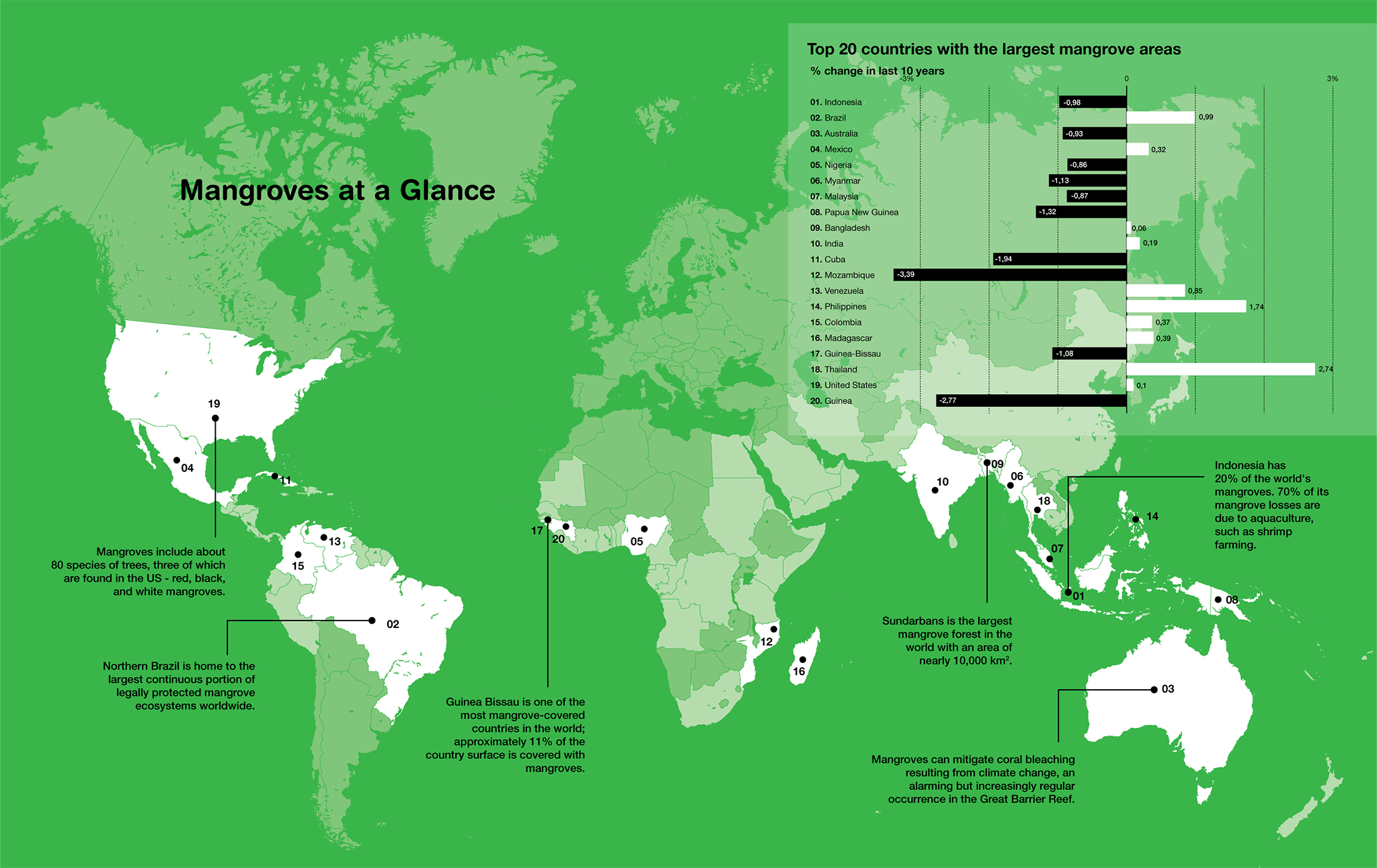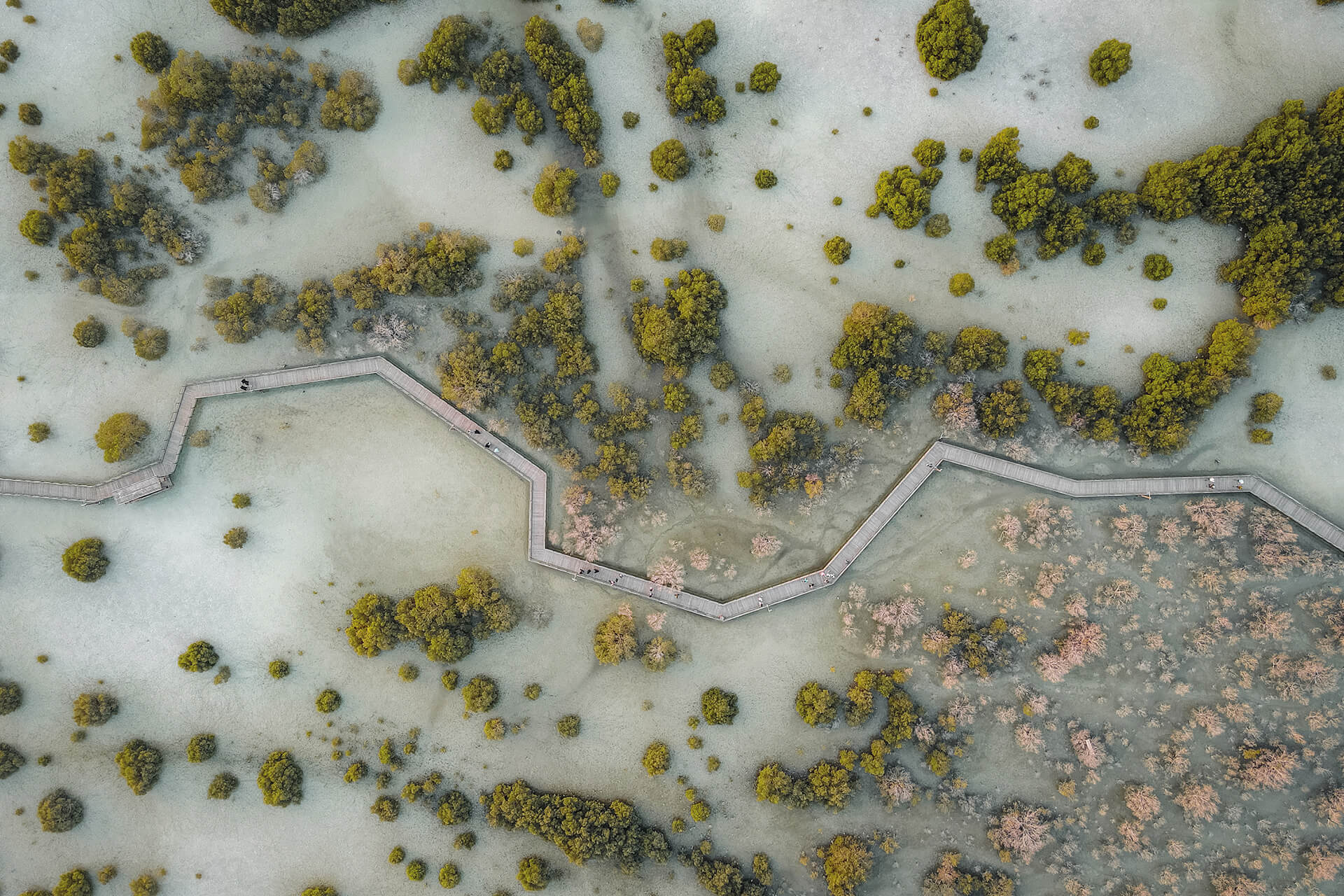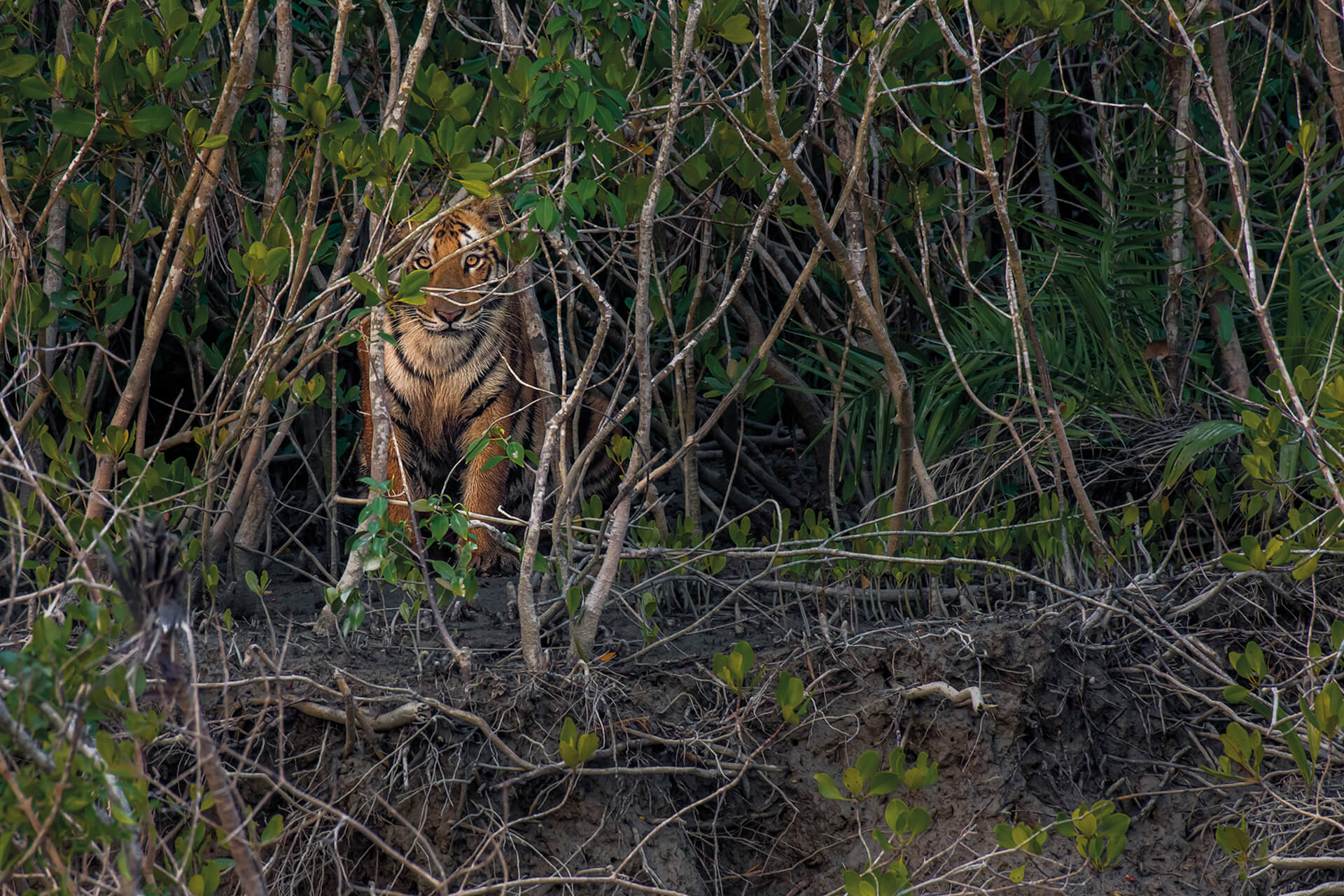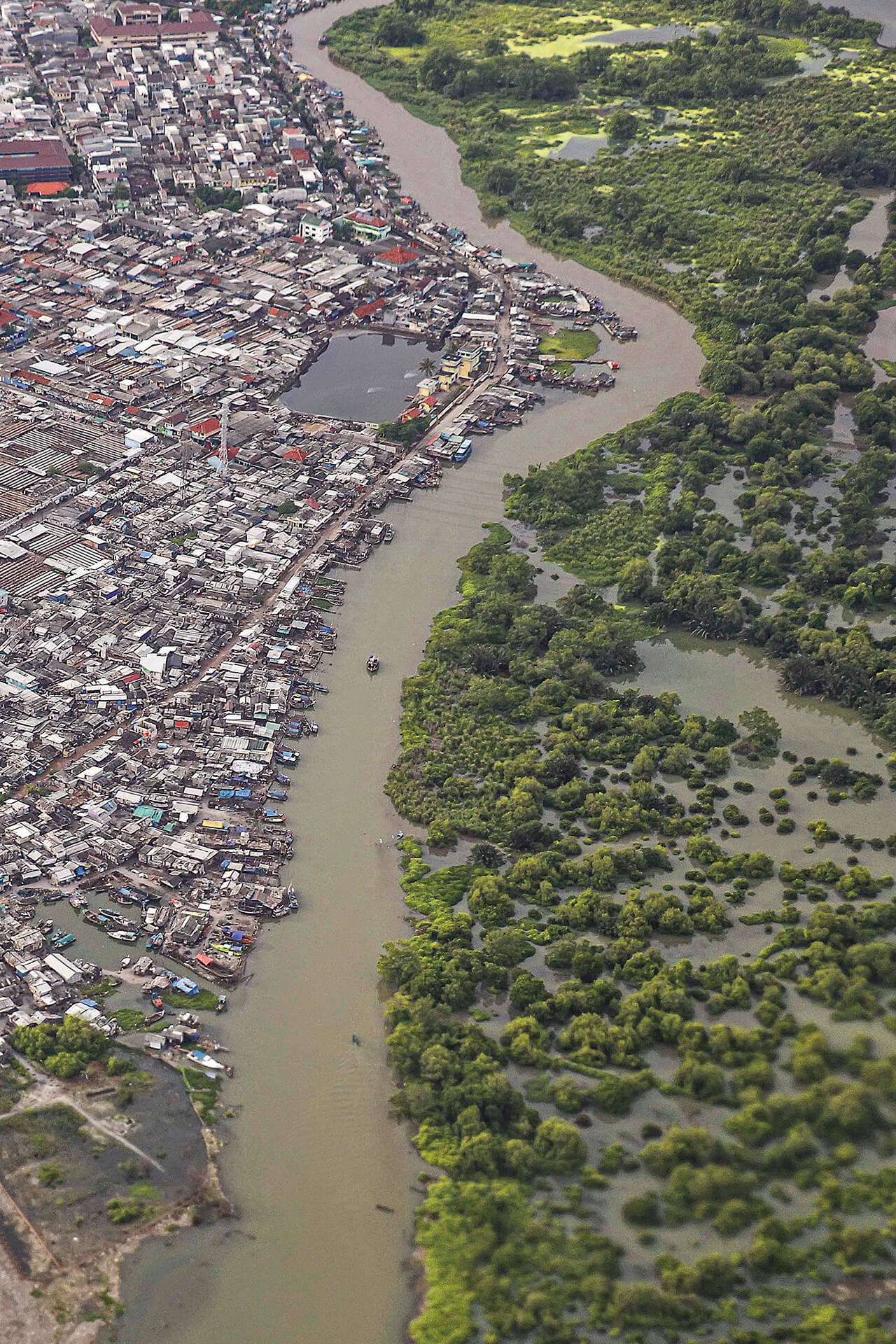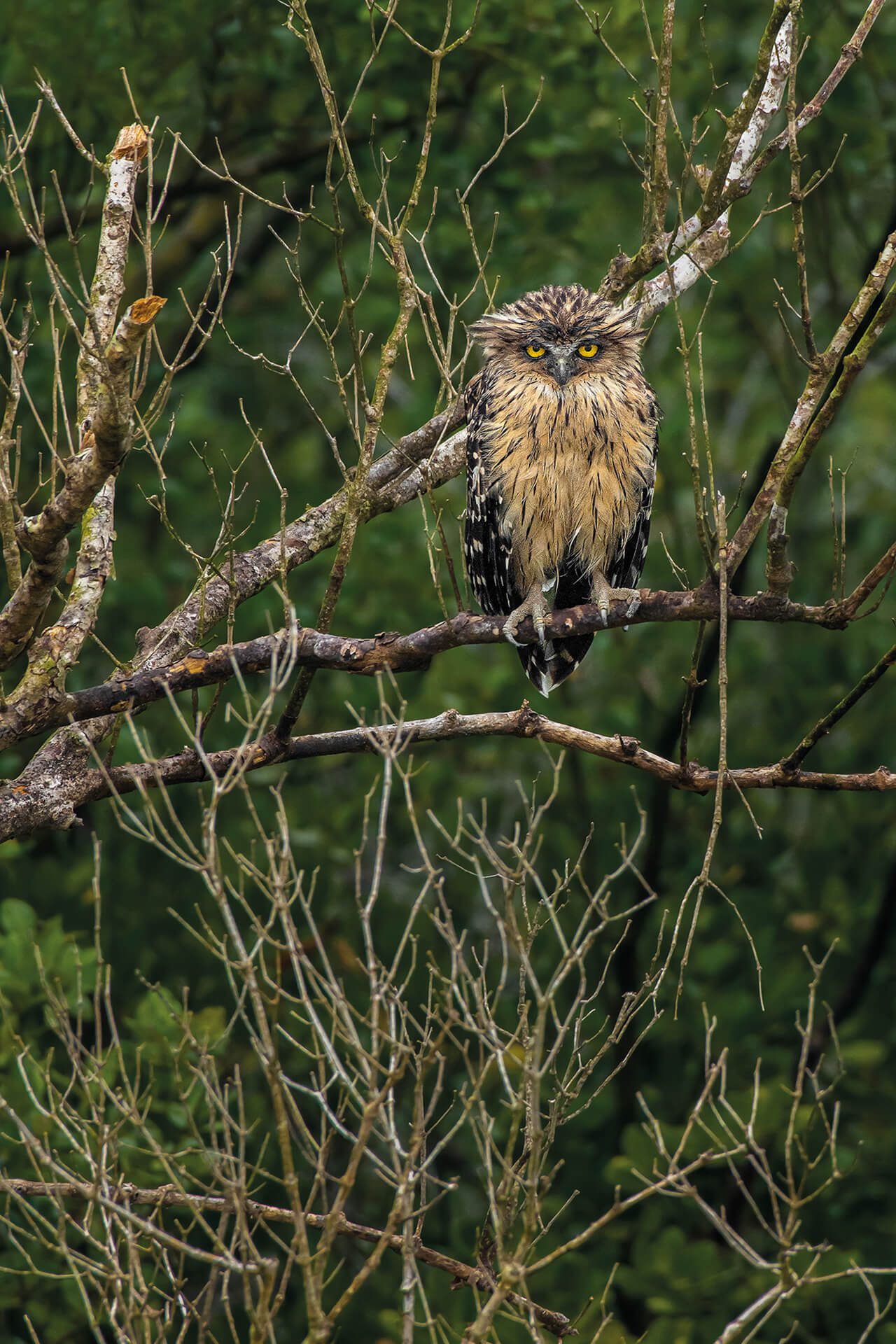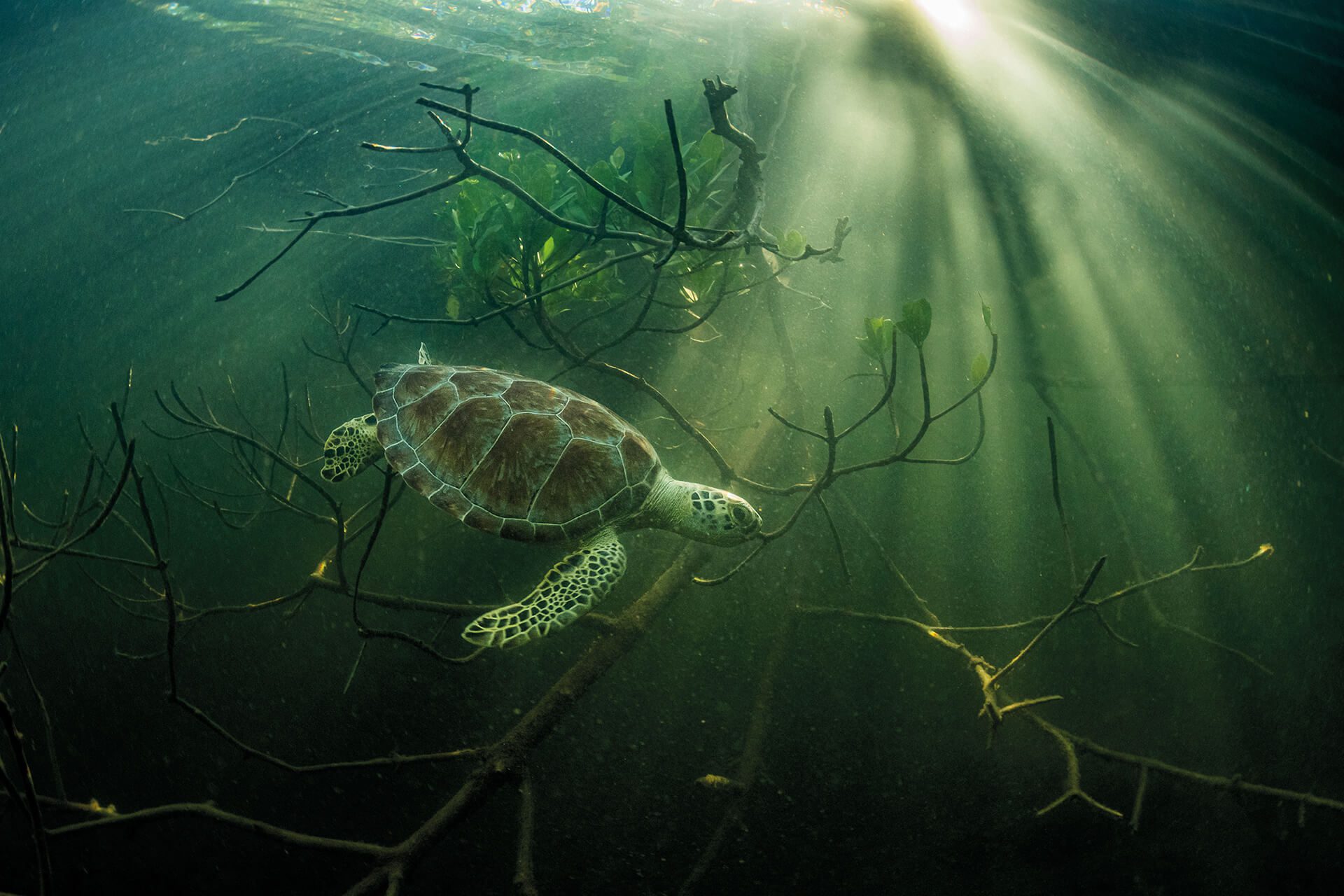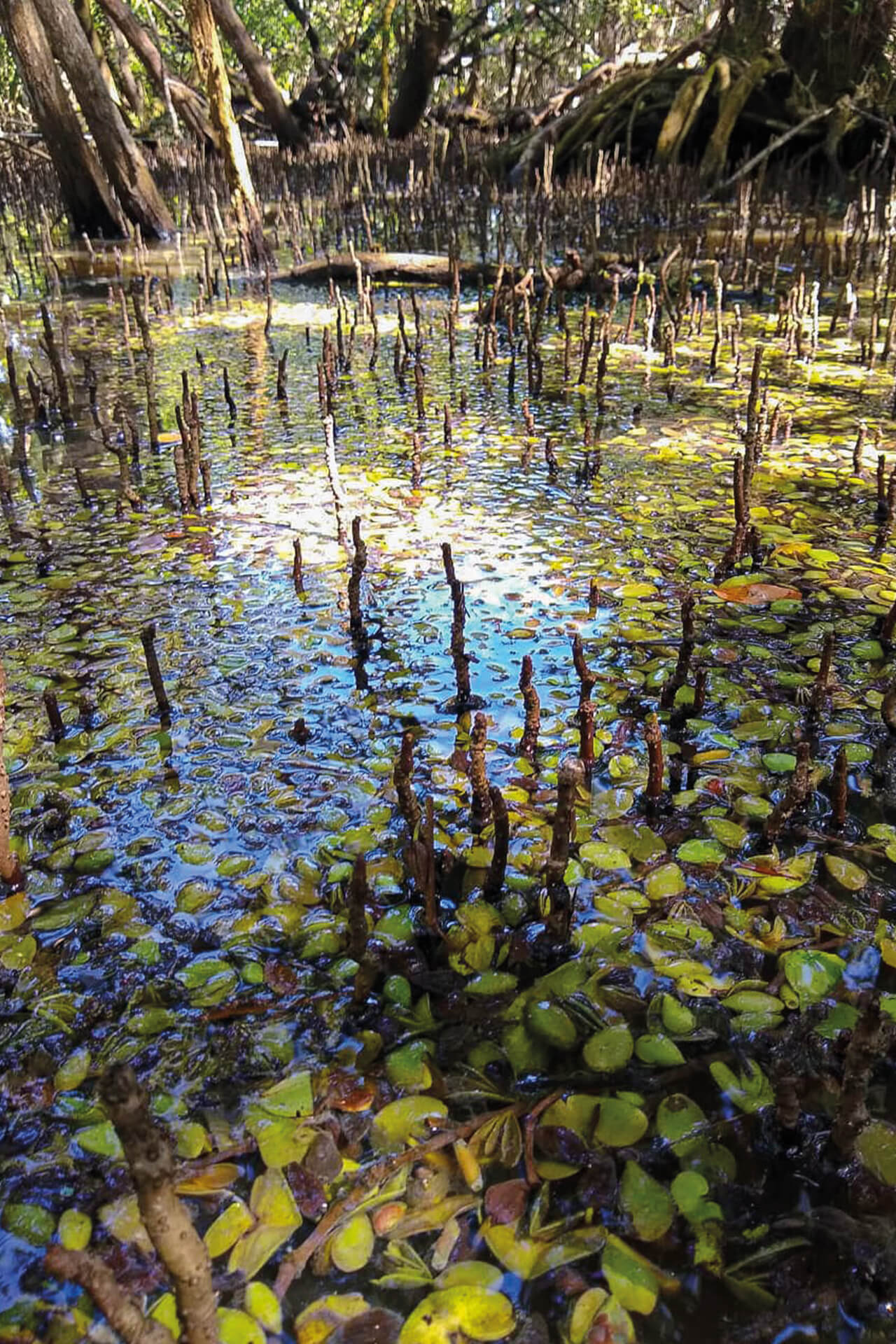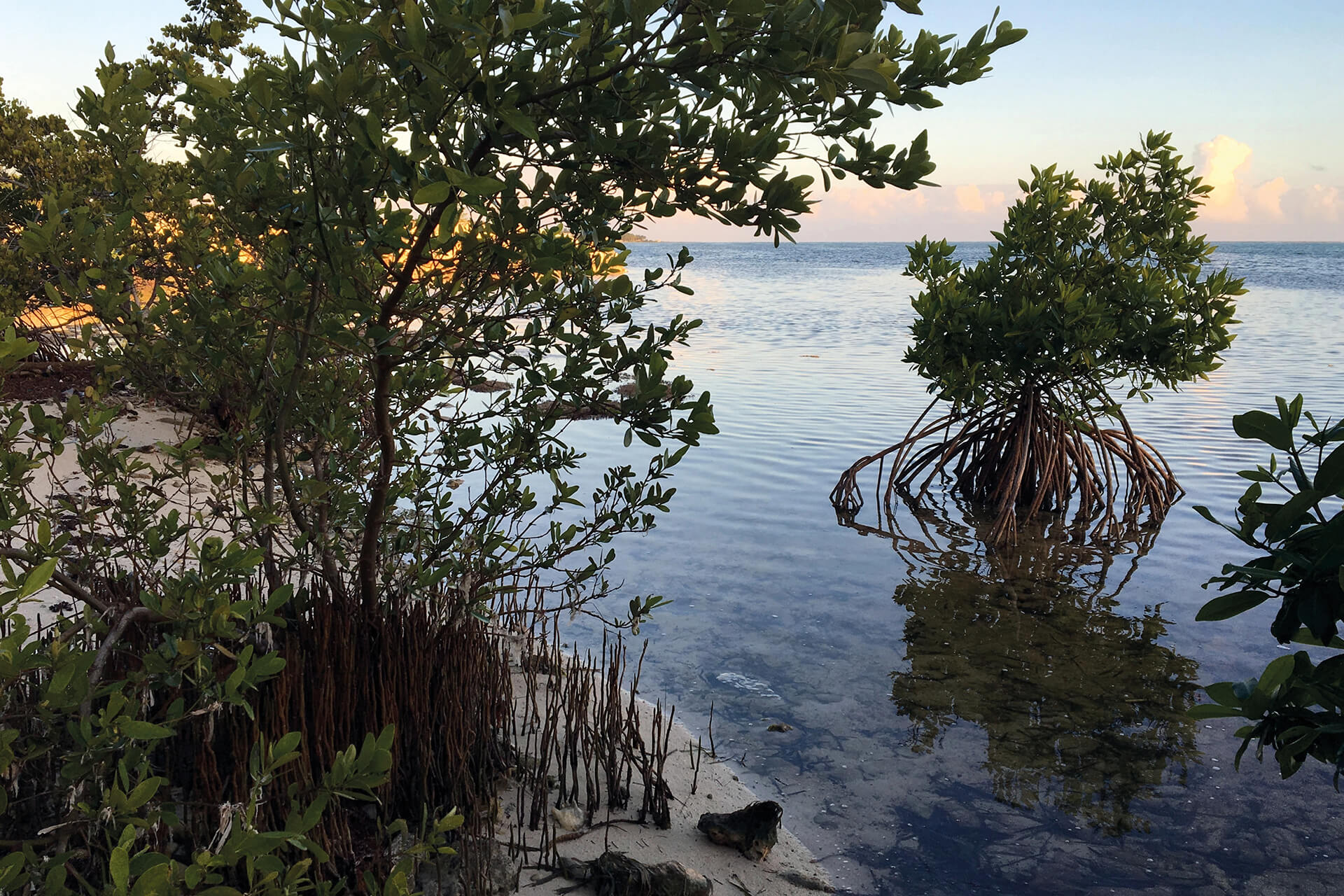Crowns of lush foliage and spindly stilt roots emerge from the mirror of calm water: the otherworldly juxtaposition of forest and sea, the allure of mangroves is compelling. But mangroves are more than their aesthetic appeal – these threatened ecosystems are vital for sustaining life as well as mitigating the impacts of climate change.
The only trees able to inhabit saltwater, mangroves are found on just under 12% of coastlines. They are hotspots for biodiversity, providing critical habitat for both terrestrial and aquatic life, including 341 threatened species, from tigers to sea turtles. In addition, over 100 million people living in the vicinity of mangroves rely on them for a variety of ecosystem services and goods, from forest products, clean water, and food – to protecting coastlines against erosion and weather-related events.
While they cover just 0.1% of the planet’s surface, mangroves store more carbon per unit than any other ecosystem – and sequester up to 5 times as much carbon as rainforests. Current estimations project that mangrove ecosystems are storing over 21 gigatons of blue carbon.
Given their crucial role, it is paramount that the global community recognize the significance of mangroves and join the movement to support their protection and revitalization. The 2021 Global Mangrove Alliance’s The State of the World’s Mangroves report concluded that over the 20 years preceding 2016, the world has seen a net loss of 4.3% of its mangroves, yet global mangrove habitats still cover 136,000 square kilometers in 2016 – an area slightly larger than Greece.
While rates of mangrove loss have slowed globally, they are still being lost faster than any other type of forest, with 60% of all mangrove losses due to human impacts. The net change of these ecosystems can be tracked on the Global Mangrove Watch platform, the world’s most comprehensive monitoring tool to date, which is also run by the Global Mangrove Alliance and supported by many partners including universities, NGOs and government agencies from around the world.
This VIEWS highlights images from Mangrove Action Project, a member of the Global Mangrove Alliance, and their 2021 Mangrove Photography Awards with the aim of capturing the beauty of life that rely on mangroves, while highlighting the challenges and work that needs to be done to conserve and restore these invaluable ecosystems.
